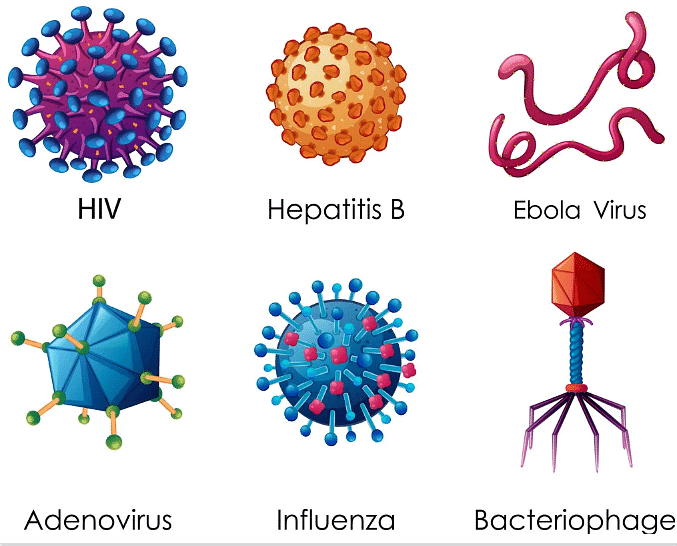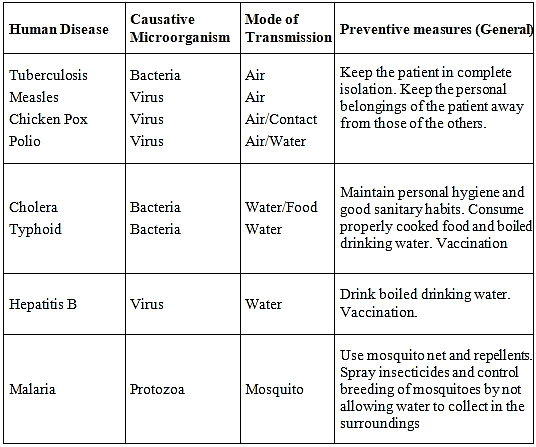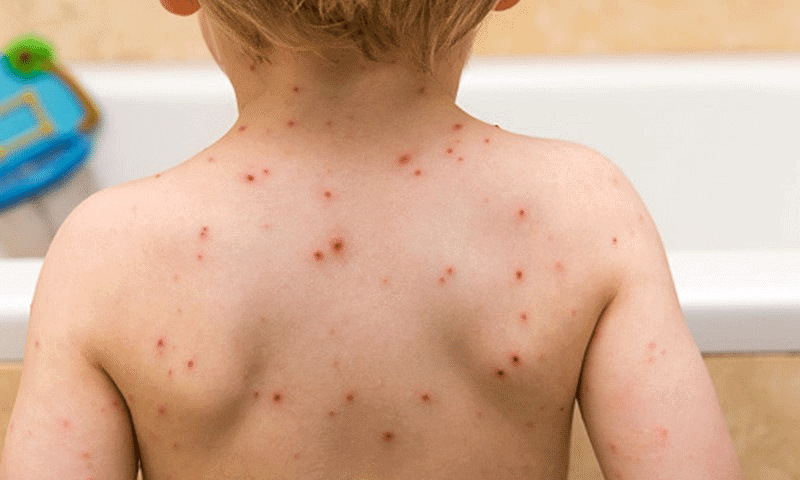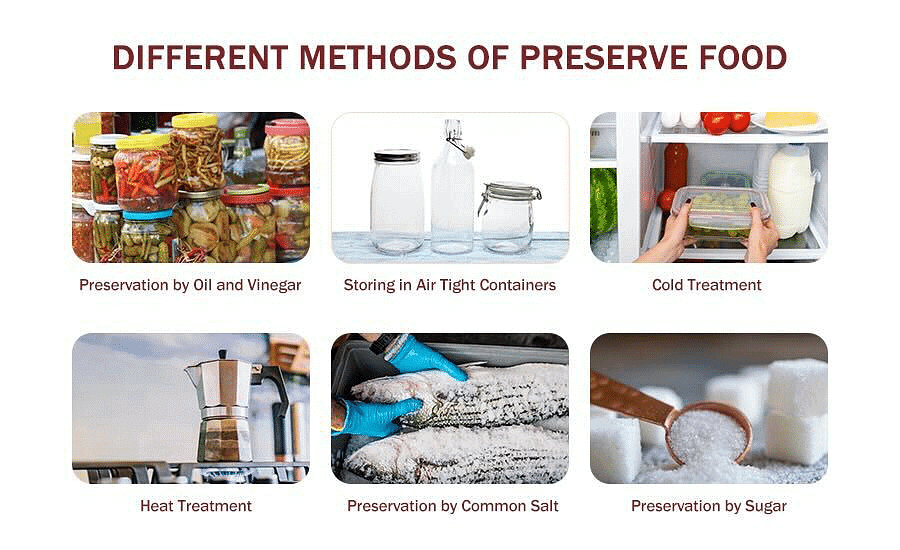Microorganisms - Friend & Foe Summary Class 8 NCERT Summary
| Table of contents |

|
| Introduction |

|
| Microorganisms |

|
| Classification of microorganisms |

|
| Importance of microorganisms |

|
| Harmful microorganisms |

|
| Food Preservation |

|
| Methods of food preservation |

|
| Nitrogen cycle |

|
Introduction
- Those living organisms around us that cannot see with the naked eye are called microorganisms or microbes.
- Some of these can be seen with a magnifying glass, while some cannot be seen without the help of a microscope. That is why these are called microorganisms or microbes.
Microorganisms
Microorganisms are classified into four major groups. These groups are bacteria, fungi, protozoa, and some algae.
Classification of microorganisms
(i) Bacteria

- Single-celled organisms
- Found in a wide range of habitats ranging from glaciers to deserts and hot springs
- For example, curd bacteria (Lactobacillus)
(ii) Fungi

- Multicellular, heterotrophic organisms
- Lack chlorophyll and is generally found in colonies
- For example: Penicillium, Aspergillus
(iii) Protozoa

- Unicellular or multicellular microorganisms
- Usually found in water
- For example, Amoeba and Paramecium
(iv) Algae

- Unicellular or multicellular autotrophic organisms
- Contains chlorophyll pigment and carries out photosynthesis
- For example, Chlamydomonas and Spirogyra
(v) Viruses

- Viruses are also microscopic and reproduce only inside the cells of the host organism, which may be a bacterium, plant, or animal.
- Ultramicroscopic organisms
- Require host cells to reproduce and complete their life cycle.
- For example, the Influenza virus and poliovirus.
Importance of microorganisms
(i) In the food industry
- Lactobacillus bacteria promote the conversion of milk into curd.
- Yeast is used in the preparation of breads, pastries, and cakes.

(ii) In the beverage industry
- Yeast is used for the commercial production of alcohol, wine, and vinegar (acetic acid).
- Yeast acts on sugar and converts it into alcohol by the process of fermentation. Louis Pasteur discovered fermentation.
(iii) In medicine production
- Medicines produced by certain microorganisms to kill or stop the growth of other disease-causing microorganisms are called antibiotics.
- Antibiotics are obtained from bacteria and fungi.
- Commonly used antibiotics are streptomycin, tetracycline, and erythromycin.
- The first antibiotic, penicillin, was prepared by Alexander Fleming
(iv) In vaccine production
- Protection of the body from the attack of various disease-causing microorganisms through vaccines is known as vaccination.
- Vaccines include dead or weakened microbes that trigger the production of antibodies in the body.
- These antibodies help in preventing the attack from disease-causing microorganisms.
- Vaccination helps in controlling diseases such as cholera, polio, smallpox, hepatitis, etc.
- A vaccine for smallpox was discovered by Edward Jenner.
 (v) In increasing soil fertility
(v) In increasing soil fertility

- Blue-green algae and Rhizobium bacteria are called biological nitrogen fixers.
- They fix free atmospheric nitrogen to enhance soil fertility.
(vi) In cleaning the environment
- Microorganisms (decomposers) help convert the dead waste of plants and animals into simpler substances through the process of decomposition.
Harmful microorganisms
- Disease-causing microorganisms are called pathogens.
- Diseases in humans caused by microorganisms
- Diseases caused by microorganisms that spread from an infected person to a healthy person through air, water, or food are called communicable diseases.
- Examples include cholera, chicken pox, and tuberculosis.
- The organisms that transmit diseases from one place to the other are called carriers.
Example of carriers
- Housefly spreads diseases such as cholera, dysentery, and typhoid.
- Female Anopheles mosquito spreads malarial parasites.
- Female Aedes mosquito spreads dengue virus.

Examples of human diseases caused by bacteria
- Tuberculosis
- Cholera
- Typhoid
Examples of human diseases caused by virus
- Measles
- Chickenpox
- Polio
- Hepatitis-B
 Chickenpox
Chickenpox
Examples of human diseases caused by protozoa
- Malaria
- Sleeping Sickness
Diseases in animals caused by microorganisms
- Anthrax is caused by bacteria
- Foot and mouth disease in cattle is caused by a virus
Diseases in plants caused by microorganisms
- Citrus canker disease is caused by bacteria
- Rust of wheat is caused by fungi
- Yellow vein mosaic of Bhindi (Okra) is caused by virus
Food Preservation
- The process of preventing the spoilage of food items by the action of microbes is called food preservation.
- Microorganisms act on food items and spoil them.
Methods of food preservation

(i) Chemical methods
- The chemicals that control the growth of microorganisms in food are called preservatives.
- For example, sodium benzoate, sodium metabisulphite, salts, and edible oil.
- Common salt is used as a preservative in pickles. It is also used to preserve meat and fish.
- Sugar is used as a preservative in jams and jellies.
- Oil and vinegar are used as preservatives in pickles and vegetables.
(ii) Heat and cold treatments
- Boiling the milk helps kill the microorganisms present in it.
- Pasteurization is a technique of preserving milk in which it is boiled to about 70°C for 15 to 30 seconds and then suddenly chilled and stored.
(iii) Storage and packing
- Dry fruits and vegetables are stored in sealed air-tight packets to prevent microbial attack.
Nitrogen cycle

- It involves the circulation of nitrogen through living and non-living components of nature.
- Nitrogen gas comprises 78% of the atmosphere.
- The first process of the nitrogen cycle is the fixation of nitrogen gas into nitrogenous compounds caused by the bacterium Rhizobium and lightning.
- Nitrogen compounds in soil are taken up by the plants through roots and used up in the synthesis of plant proteins. Animals obtain nitrogen by feeding on plants.
- Waste of plants and animals is converted to nitrogenous compounds by the action of bacteria and fungi in the soil.
- Some bacteria convert nitrogenous compounds back to nitrogen to maintain atmospheric levels of nitrogen.
|
90 videos|296 docs|44 tests
|
FAQs on Microorganisms - Friend & Foe Summary Class 8 NCERT Summary
| 1. What are the different classifications of microorganisms? |  |
| 2. Why are microorganisms considered important for human life? |  |
| 3. What are some harmful effects of microorganisms on human health? |  |
| 4. What are the methods of food preservation? |  |
| 5. How does the nitrogen cycle involve microorganisms? |  |
















